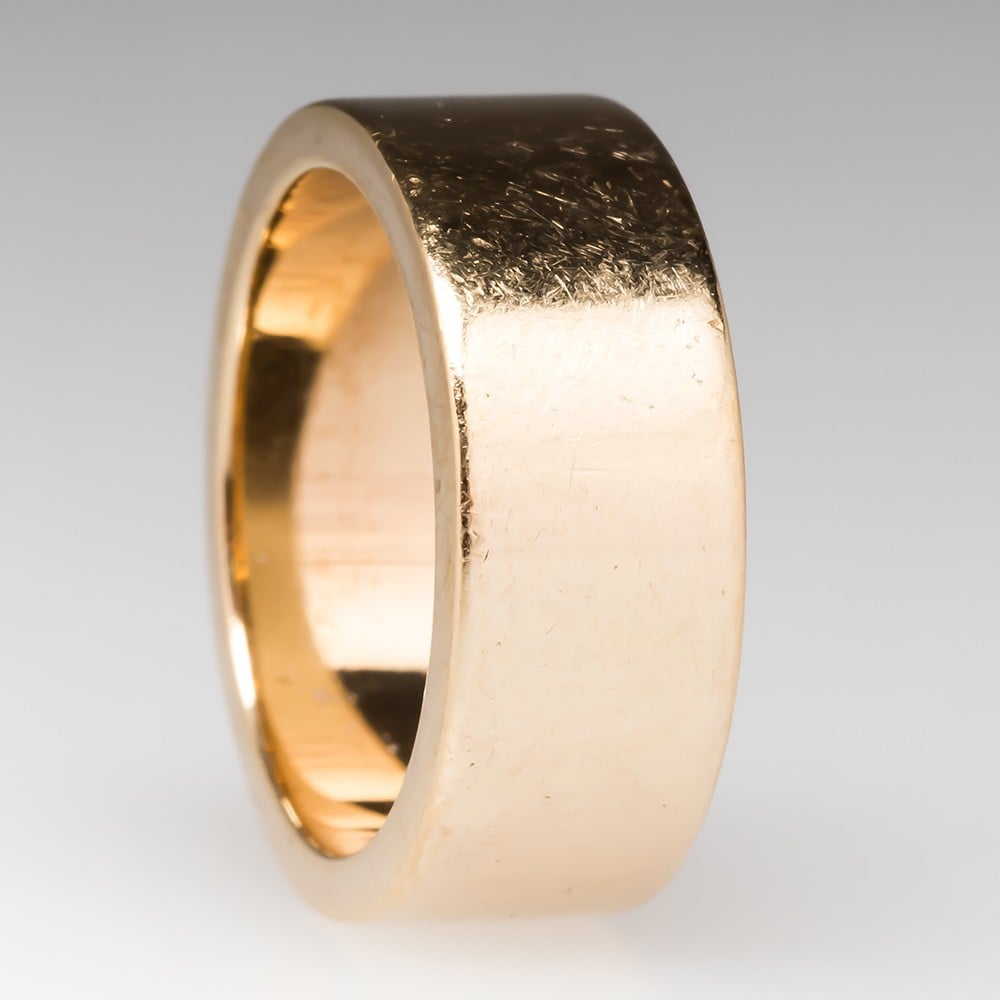Posted in: World Wedding Customs
 Greek Orthodox wedding bands usually consist of a simple gold band. This vintage wedding band is a beautiful choice for this style. Click here to view a selection of gold wedding bands. Photo ©EraGem Jewelry
During a Greek Orthodox wedding, the exchange of wedding rings is a significant part of the ceremony. The bride and groom wear their rings as they approach the altar. The bride wears her engagement ring on her left ring finger, and both wear their wedding rings on their right ring fingers.
Greek Orthodox wedding bands usually consist of a simple gold band. This vintage wedding band is a beautiful choice for this style. Click here to view a selection of gold wedding bands. Photo ©EraGem Jewelry
During a Greek Orthodox wedding, the exchange of wedding rings is a significant part of the ceremony. The bride and groom wear their rings as they approach the altar. The bride wears her engagement ring on her left ring finger, and both wear their wedding rings on their right ring fingers.
The Blessing of the Rings
Standing at the altar, they listen as the priest explains the sacrament of marriage. This profound mystery of two becoming one while yet remaining unique individuals. Next, the priest performs the ritual blessing of the rings. The bride and groom hand him their wedding rings. The priest then uses them to make the sign of the Cross on the groom's forehead and then the bride's forehead. (source) Simultaneously, he repeats the following declaration three times: "The servant of God...(groom) is betrothed to the servant of God ... (bride) in the name of the Father, and of the Son, and of the Holy Spirit. Amen." He then reverses the order, beginning now with the bride's forehead and the bride's name, blessing the union three more times. He then places the rings once again on the bride's and groom's right ring fingers.The Symbolism of Greek Orthodox Wedding Rings
Greek Orthodox couples wear their rings on their right hands in observance of the rings of power, authority, and pledge worn by the Biblical figures Joseph, Daniel, and the prodigal son. Specifically, the prodigal son received a ring before he left home with his inheritance. He wore the ring on his right hand as a symbol of compassion and celebration for his hoped-for return. For Greek Orthodox believers the right hand symbolizes the establishment of truth and the source of strength. It also represents the power and authority required to fulfill a pledge of commitment.An Intertwining of Souls
Next, the couple's koumbaro (sponsor), a role filled in modern times by the best man or maid of honor, steps forward to perform another ritual involving the wedding bands. The sponsor crosses his hands in front of himself and then takes hold of the groom's ring in his right hand and the bride's ring in his left. He slips the rings off their fingers transfers them to the hand of the other person, back and forth three times. This ring exchange symbolizes the intertwining of the two lives into one. From then on, one person's strengths will compensate for the weaknesses of the other. Together their lives will prove richer than if they remained apart. (source)Simple Gold Bands
It has long been the custom of Greek couples to choose simple gold bands to serve as their wedding rings. Some Greeks living abroad move the rings from their right hands to their left hands after the ceremony. However, many maintain the custom of wearing the wedding bands on the right hand. Princess Tatiana of Greece sometimes wears her rings on her left finger. However, on her wedding day, she wore her sapphire and diamond halo engagement ring on her left hand. On her right hand she wore a simple gold band. In 2013, she continued to wear her engagement ring on her left ring finger. (source) A closeup of the photo shows what looks like a diamond eternity ring nestled snug against the band of her halo ring. Which aspects of the Greek Orthodox wedding ring traditions appeal to you? ~Angela Magnotti Andrews10 years ago
65 view(s) 